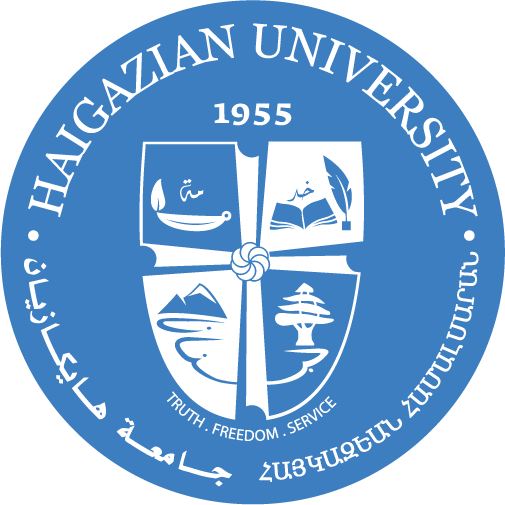RESEARCH
HU Press Publications
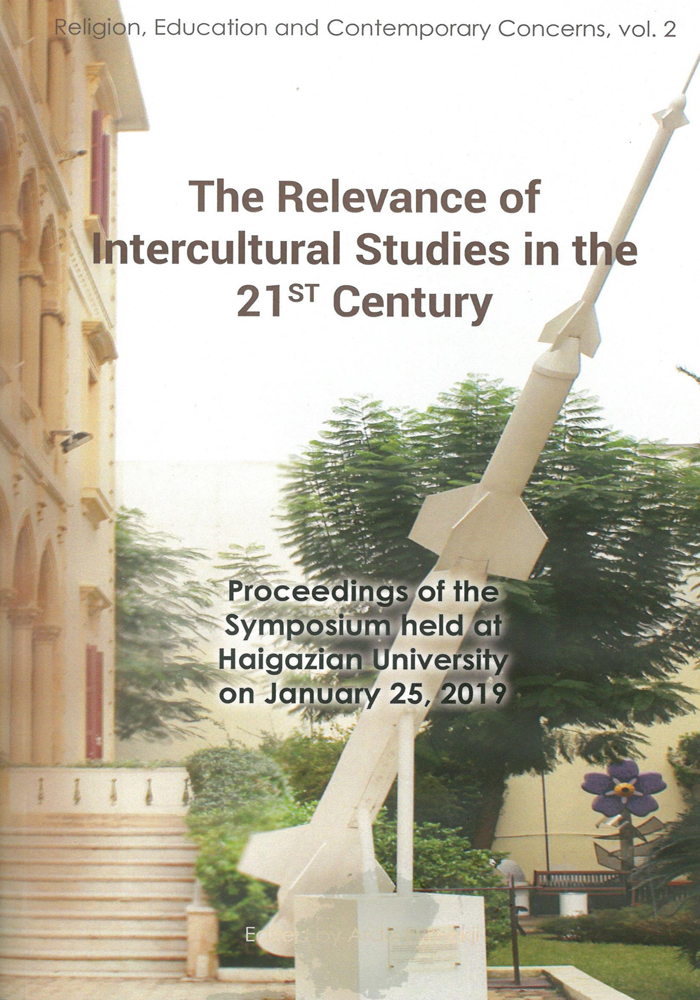
Proceedings of the Symposium
The Haigazian University Press issued the Proceedings of the Symposium “The Relevance of Intercultural Studies in the 21st Century,” edited by Dr. Arda Ekmekji, Dean of the School of Arts and Sciences at Haigazian University.
The conference was held at Haigazian University on January 25, 2019.
The 88-page-volume includes the papers of the seven professors participating in the symposium, the perceptions of a graduate student, a “foreword” by the editor, “opening remarks” by HU President, Rev. Dr. Paul Haidostian, “Welcoming Words and Reflections” by Dr. Ekmekji and biographical notes on the contributing authors.
The book is the second in the “Religion, Education and Contemporary Concerns” series.
In addition to the above volume, during 2020 HU Press published the following two books:
Հ.Բ.Ը.Միութեան Հաճընի Որբանոցը, 1919-1920/The AGBU Hadjin Orphanage, 1919-1920, Introduction, translation and annotation by Antranik Dakessian.
Հայկազեան Հայագիտական Հանդէս, Հտր. Խ./Haigazian Armenological Review, Vol. 40.
The above mentioned books can be ordered by contacting the office of the President.
Letters from Cilicia, Alice Keep Clark
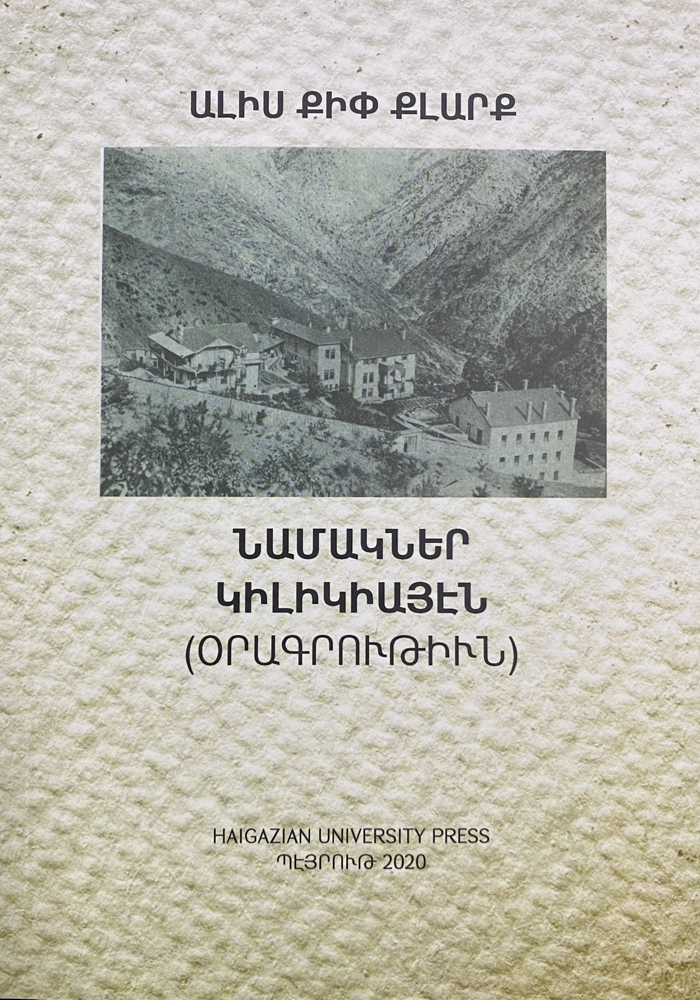
The Haigazian University Press has issued the Armenian translation of the memoires of Alice Keep Clark (1873-1954), the missionary of the orphanage of Hadjin, with an introduction and annotations by Dr. Antranik Dakessian.
The orphanage, which had stopped functioning during the Genocide, was reactivated during the Armistice. The returning missionaries were instrumental in collecting some 260 orphans from the streets of Hadjin and neighboring villages, offering them education and protecting them from the dire living conditions prevailing in Hadjin.
After a peaceful year of reconstruction, Hadjin was besieged by the Turks. The orphanage, which was some half a mile outside the limits of the city, maintained neutrality and hoisted the American flag, which prevented the attacking Turks from controlling it.
Isolated in a sea of Turkish forces, the orphanage precariously continued its educational mission and maintained a relationship dictated by circumstances with the Turkish military commanders. Eventually, it was attacked and came under the control of Armenian defenders, who evacuated the orphans and the staff then abandoned it. After reoccupying the orphanage, the Turks pillaged it, burnt it down and sent the six foreign missionaries back to their central office in Constantinople.
During her stay in the orphanage Clark sent letters to her parents. These letters and the diary she kept during her stay in the orphanage constituted the core raw material of her book, Letters from Cilicia, an extremely touching, emotional narrative. It describes in frank terms the life of the orphans and the struggle of the caretakers to pull these poor children out of their misery and give them hope for a better life.
The book is the genuine account of a missionary witnessing the psychological changes of the orphans from hopeless creatures to poor boys and girls who start believing that the desperate years have gone for good and that they will be given the chance to work for a better life. Unfortunately, though, this little light of hope is brutally butchered by the marauding Turks. Indeed, than a dozen of these orphans.
The AGBU HADJIN ORPHANAGE, 1919-1920
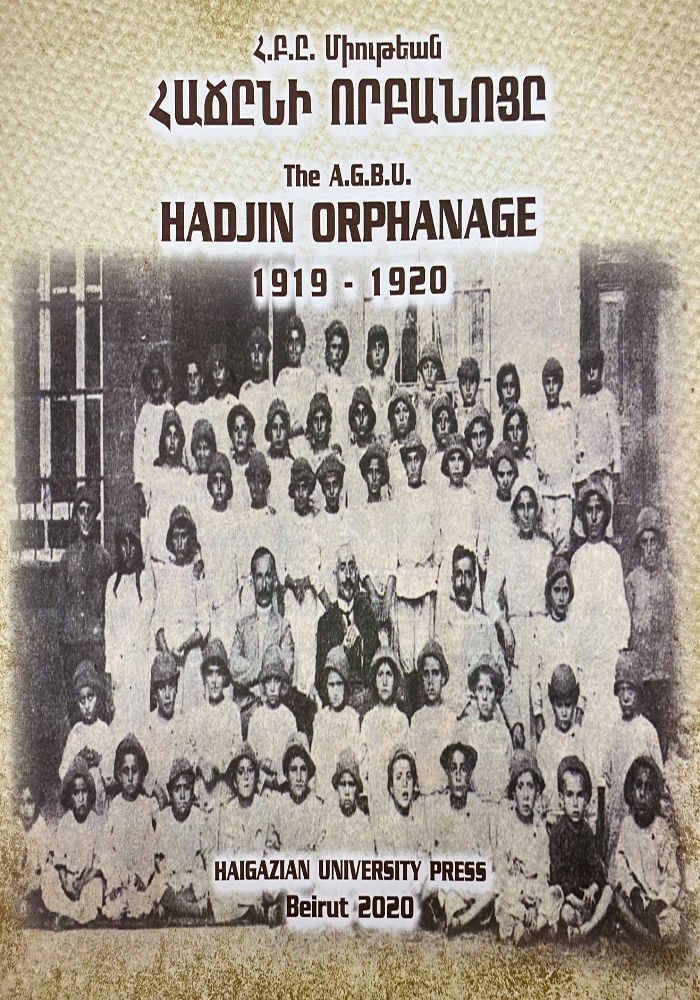
The Haigazian University Press issued the register of the AGBU Hadjin Orphanage, with an introductory by Dr. Antranik Dakessian.
The orphanage was founded in Damascus, during the last days of WWI. During the Armistice, with its 66 orphans the orphanage was relocated to Hadjin where other orphans were sheltered bringing the total number to 212. After a peaceful year of reconstruction, Hadjin was besieged and after a heroic defense of 8 months the city was overrun by the Turks who massacred the some 7000 Hadjintsis alongside the orphans. Not more than 400 Hadjintsis, 8 orphans and a few staff of the orphanage survived the carnage.
This bilingual volume reproduces the profile of the orphans based on the original register which was recovered from the AGBU Cairo archives. Alongside a passport size photo of the orphans, it details their age, birthplace, exile location, their parents’ and relatives destiny, and the name of their financial caretaker.
In his introduction, Dr. Dakessian highlights the exodus of the returning Hadjintsis, the efforts made for the reconstruction of their lives and birthplace. An extensive profile of the orphanage and its relocation is narrated too, and how the orphanage contributed to the revitalization of the beleaguered town. The volume includes a map that shows the birthplaces and exile locations of the orphans, a diagram of the defense positions, a few pictures, and an appendix of the names of the orphans.
The book can be ordered by contacting the office of the President.
“The Symbolism of Water in Religion”
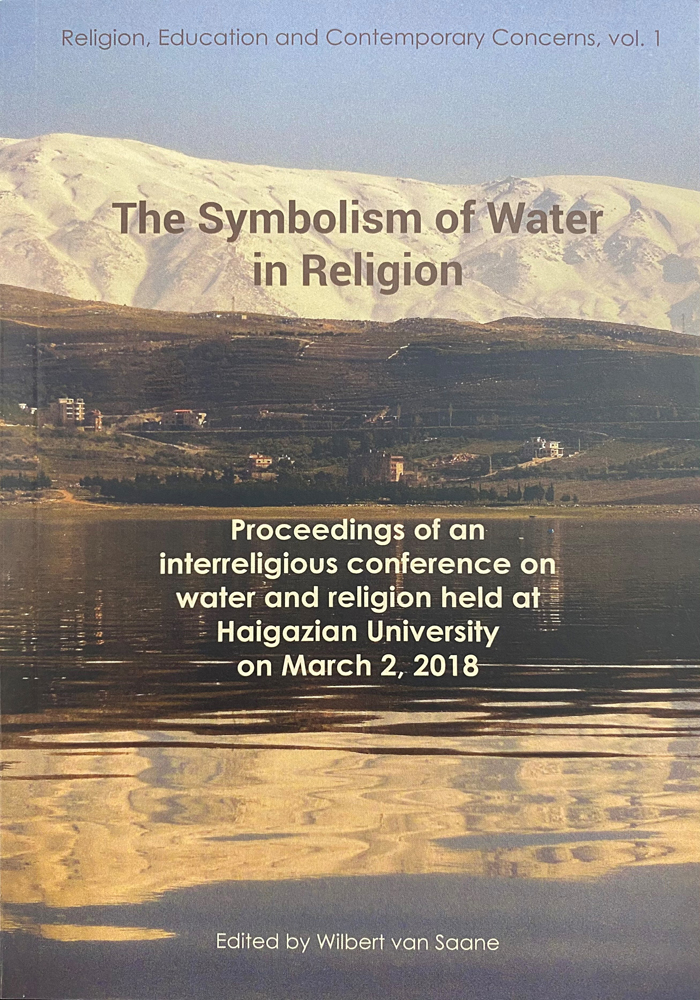
The Haigazian University Press published the proceedings of the interdisciplinary conference entitled “The Symbolism of Water in Religion”, which took place on March 2, 2018. The conference combined scientific insights, theological reflection and reports of faith-based projects for environmental care.
The book is the first in a new series of volumes on religion, education and contemporary concerns. The aim of this series is to present fresh perspectives on the contemporary relevance of religion in education, especially with regard to pressing issues such as environmental care, peacebuilding, and relief work.
Read the news in Arabic covered in Annahar Daily:
The Adana Massacres An Eyewitness Account Hagop Babiguian Ottoman MP
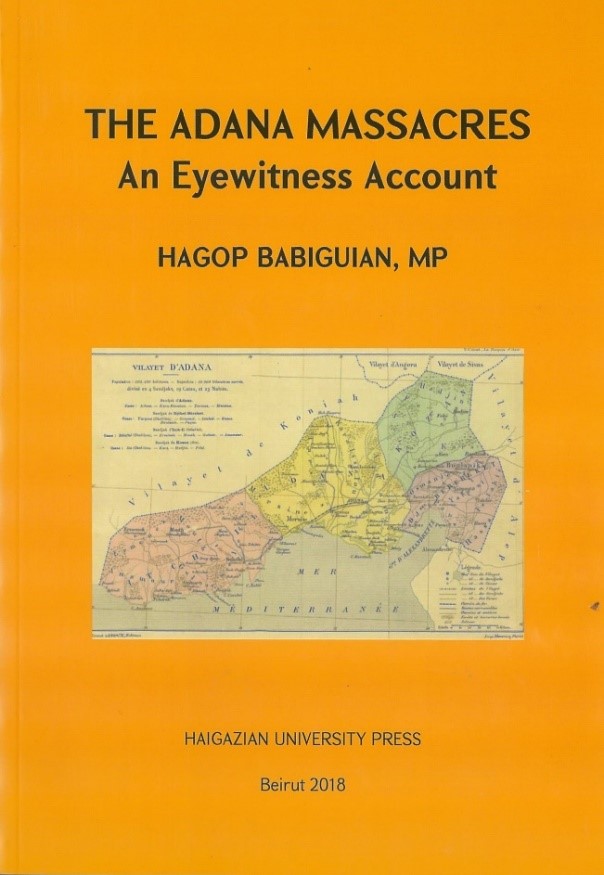
In the last days of 2018 The Haigazian University Press issued Ottoman MP Hagop Babiguian’s full report on the Adana Masssacres translated to English by Dr. A. B. Gureghian.
Alongside this first-ever complete translation the book includes a broad introduction and a number of appendixes concerning Babiguian’s telegrams to his PM, interviews he had on the ship while returning from his mission. The Appendixes include as well a number of discussions on the Adana Court Martial trials and verdicts, the echoes of the Western Press, surveys and data of victims and financial loss, Turkish Penal Code 301 and the European Human Rights Court resolutions on Turkey’s Human Rights record in 2010-11.
In a separate section Dr. A. B. Gureghian discusses and proves the involvement of the state in the Adana Massacres.
The book is enriched by a list of literature for further reading as well as an index.
The book can be ordered by contacting the office of the President.
Armenian Ethnic Identity in Context:Empirical and Psychosocial Perspective
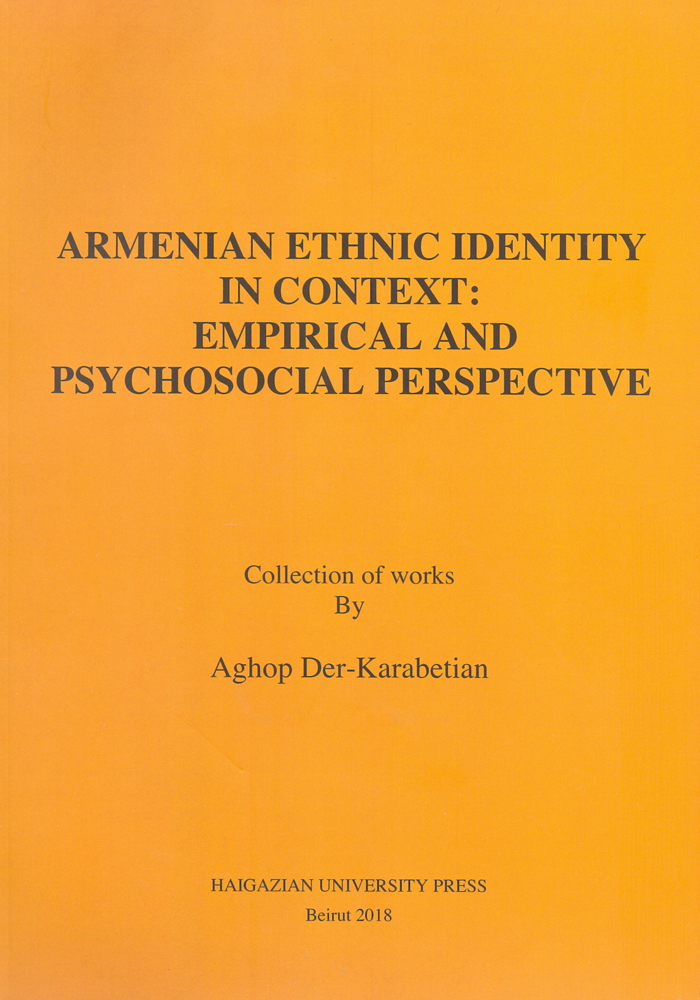
The book is a compilation of various field studies, surveys, research articles and presentations, on second generation Lebanese and American-Armenians and those of mixed parenthood. It discusses various aspects and features of issues of identity of these subgroups, language learning, culture preservation and heritage awareness, biculturalism and bicultural identity, stereotyping, disengagement from the group, correlations of livelihood dependencies and attachment/detachment from the in-group, identity and religion. The book uncovers the ongoing processes, transformation and trends of the above-mentioned concepts.
As was the case in Beirut, likewise, in the USA Dr. Der-Karabetian combined his efforts and collaborated with Armenian and non-Armenian scholars and researchers and generated original material on Armenian Diaspora sociocultural preoccupations. Moreover, Dr. Der-Karabetian’s research studies in the USA followed and reflected the changes in Armenian identity, which is naturally not static and, like any ethnic identity, reshapes itself over time according to sociopolitical transformations and context.
This book reflects the academic path of Dr. Der-Karabetian. It is a significant contribution, particularly to Armenian Diaspora Studies.
Bibliography

The book lists all the books published in Armenian in Lebanon since 1894, the date of the first Armenian book published in Lebanon. It includes as well all Turkish language books written in the Armenian alphabet that have been published in Lebanon. A total of 6300 books are listed in some 430 pages.
This unprecedented bibliography gives a general overview of the Armenian publication effort in Lebanon. It is a rich source for researchers on the history of Lebanese Armenian printing, publishers, series, and printing houses, children’s books, genocide memoires, Lebanese Armenian literature, school textbooks, etc.
Arab Eye Witness Accounts of the Armenian Genocide

The Arab nation was the first to witness the Armenian massacres of WWI. This book is a compilation of over one-hundred Arab witness accounts and testimonies. The author, Dr. Nora Arissian analyses these documents and notes the shift in defining these atrocities from ‘mass killings’ to ‘the murder of a nation’ and eventually Genocide.
The Armenians of Musa Dagh

Authored by Prof. Vahram L. Shemmassian the book is a detailed and thorough examination of the Armenians of Musa Dagh before their relocation in Anjar. It documents their extensive life, the social aspect, agriculture, trades, migration and cultural manifestations.
Armenian Genocide Centennial

The book is the compilation of the proceedings of the conference entitled “Armenian Genocide Centennial: Addressing the Implications.” The conference was organized by the Haigazian University in collaboration with the Central Committee for the Centennial Commemoration of the Armenian Genocide. The conference was held at Haigazian University on January 31-February 1, 2015.
Towards Golgotha

Towards Golgotha narrates the Memoirs of pharmacist Hagop Arsenian, a survivor of the Armenian Genocide of 1915. Written originally in Armenian, it contains two parts. The first part narrates the early life of Arsenian in the suburbs of Constantinople and then the eventual deportation of his whole family all the way to Aleppo, Syria.
The second part describes the Arsenian’s family life in Palestine from 1919 until 1940 especially in Jerusalem and Gaza, where Hagop Arsenian practices as a pharmacist.
Towards Golgotha has around 300 pages including 4 maps, 24 illustrations and 2 Appendices.
Hrant Dink Book

Translated from Turkish into Arabic, the book is a compilation of a number of daring essays written by Hrant Dink, the one-time editor-in-chief of the Istanbul-based Agos Armenian magazine.
Dink, a peacemaker and scholar, was a champion of the normalization of Armenian-Turkish relations. His editorials in Agos covered the Armenian Genocide extensively and ways to address this human catastrophe, which was perpetrated by the Ottoman state and the CUP-led government during WWI.
Hadjin Book

The book comprises the papers of the scholars who participated in the conference held at Haigazian University on the occasion of the 90th anniversary of the Hadjin defense.
The book is rich in documents and photos related to the old and new history of Hadjin and Hadjintsis and a short bibliography on books related to Hadjin.
Armenian Participation in the Lebanese Legislative Elections: 1934-2012

The book, authored by Dr. Zaven Messerlian is an historic overview of the participation of the Lebanese Armenians in the Lebanese legislative elections, as early as 1934. It details the voting power of the Armenian community, the contest of the Armenian parties in framing local alliances to attain their goal and run the Lebanese Armenian political scene.
The Haigazian University Commemorative Events of the 500th Anniversary of Armenian Printing

The book is a compilation of all public activities Haigazian University organized on the occasion of the 500th anniversary of Armenian printing.
Critical Thinking in Lebanese Armenian Schools

Analyzed and authored by Dr. Hagop Yacoubian, the book is a detailed study of educating critical thinking in Lebanese Armenian schools.
My Family History

The book is a compilation of 101 research stories written by secondary students of various Lebanese Armenian schools, where each student tells the story of his/her family during the Armenian Genocide and the aftermath.
Parsegh Ganachian (1885-1967): Turning a Life into Music

The book is a compilation of various aspects of the Lebanese Armenian composer Parsegh Ganachian and his artistic life that went far beyond Lebanon to Syria, Iraq, Egypt, Cyprus, Istanbul, and France.

